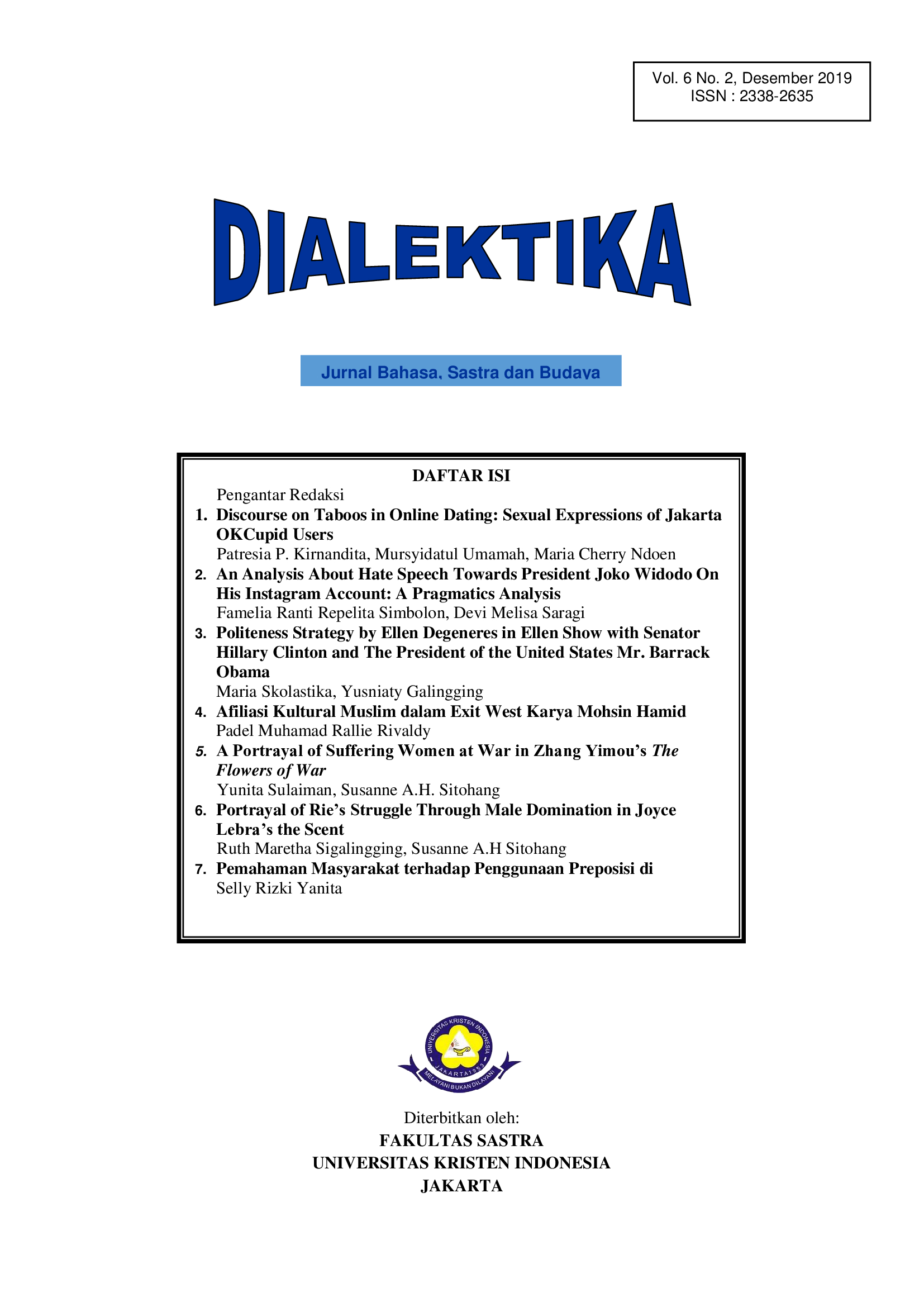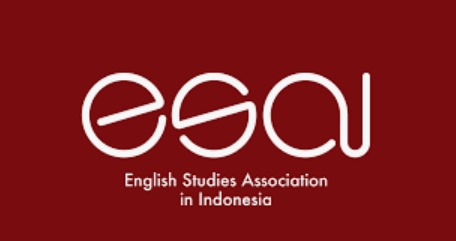AN ANALYSIS ABOUT HATE SPEECH TOWARDS PRESIDENT JOKO WIDODO ON HIS INSTAGRAM ACCOUNT: A PRAGMATICS ANALYSIS.
DOI:
https://doi.org/10.33541/dia.v6i2.4757Keywords:
pragmatics, speech act, hate speech, illocutionary functionAbstract
The purposes of this qualitative research are: (1) to find out the meanings and aims of hate speech on Joko Widodo's Instagram account. (2) to find out the functions of the illocutionary act of hate speech on Joko Widodo's Instagram account. (3) to find out the dominant function of hate speech on Joko Widodo's Instagram account. The data of this research are the comments of netizens found on Joko Widodo's Instagram account. The first result of this study shows that all the comments found on Jokowi's Instagram aim at indignation, defamation, blasphemy, distastefulness, provocation, incitement, and forgery. The second result is that the functions of illocutionary acts on Jokowi's Instagram account consist of 30 directives, 137 representatives, 7 commissives, 65 expressive, and no declaration. The third one is that the dominant function found on Jokowi's Instagram is representatives attaining 55,70% classified into 36 comments as giving an opinion, 33 comments as telling or reporting, 25 comments as complaining, 22 comments as stating, and 21 comments as suggesting.
References
Algeo, J.,& Carmen, A.B. (2005). The Origins and Development of The English Language. United State: Wadsworth, Cengage Leraning.
Huang, Y. (2007). Pragmatics: deixis. New York: Oxford University Press Inc.
Kothari, C.R. (2004). Research Methodology: Methods and Techniques. New Delhi: New Age International (P) Limitied, Publisher.
Leech. (1996). Principle of Pragmatics. London: Longman.
Miles, M.B., & A. Michael Huberman. (1994). An Expanded Sourcebook: Qualitative Data Analysis, Second Edition. London: Sage Publication.
Searle, J.R. (1968). Speech Act. Cambridge: Cambridge University Press.
Strauss, S.,& Parastou Feiz, P. (2014). Discourse Analysis: Putting our worlds into words. New York: Oxford University Press.
Waldron, J. (2012). The Harm in Hate Speech. Cambrige, Mass: Harvard University Press. Retrieved March 9, 2019, from https://www.academia.edu/5713984/2014._The_Harm_in_Hate_Speech_by_Jeremy_Waldron_Political_Studies_Review_12_1_137
Yule, C. (1996). Pragmatics. New York: Oxford University Press.
Zaim, M. (2014). Metode Penelitian Bahasa: Pendekatan Struktural. Padang: Percetakan Sukabina Press.
Allen, A.A. (2005). Professional Management. Essential of effective and interpersonal communication skills to Manage and Lead dynamic businessed with maintaining public relations, 3 (2), 64. May, 2012. Retrieved March 9, 2019, from https://rspublication.com/ijrm/may%2012/8.pdf
Austin. (1968). Locutionary and Illocutionary Acts. The Philosophy Review, 77(4), 405-424. Oct, 1968.
Linawati. (2017). Tindak Tutur Ujaran Kebencian Dalam Komentar Pembaca Pada Surat Kabar Online Tribunnews.com. Bahasa dan Sastra Indonesia, 6 (5), 606-613. Retrieved March 9, 2019, from http://journal.student.uny.ac.id/ojs/index.php/bsi/article/
Bosslet. (2011).Social Media Health Interaction Theory. Rerieved February 18, 2019, from https://www.himss.org/library/social-media-health-interaction-theory-new-theory-social-media-research
Chou & Hunt. (2009).Social Media Health Interaction Theory. Rerieved February 18, 2019, from https://www.himss.org/library/social-media-health-interaction-theory-new-theory-social-media-research
CNN Indonesia. (2018). Jokowi Akui Bantuan Korban Gempa Belum Merata. Retrieved April 20, 2019, https://www.cnnindonesia.com
Drury ( 2008:1). User Perceptions of Social Media: A Comparative Study Of Eperceived Characteristics and User Profile by Social Media. Retrieved August 10, 2019, from https://www.researchgate.net/publication /26493349_User_perceptions_of_social_media_A_comparative_study_of_eperceived_characteristics and_user_profiles_by_social_media/link/
Moreau, E. (2019). What is Instagram Anyway? Retrieved March 9, 2019, from http://Lifewire.com/what-is-Instagram-Anyway?
Surat Edaran. (2015). Penyebaran Ujaran Kebencian. Retrieved March 9, 2019, from https://rechtsvinding.bphn.go.id/jurnal_online/SURAT%20EDARAN%20KAPOLRI%20DAN%20PENYEBARAN%20KEBENCIAN%2023%20Nov%202015%20%20kirim.pdf













.jpg)





